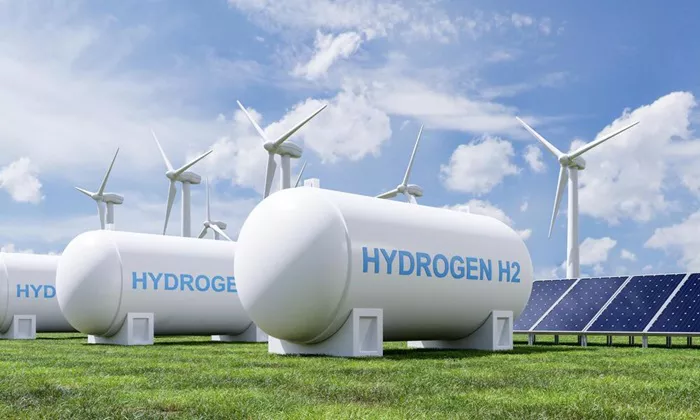In a strategic push towards a low-carbon future, the U.S. Department of Energy (DOE) has announced a $7 billion initiative to develop seven Regional Clean Hydrogen Hubs. This move underscores the growing role of hydrogen in the energy sector, particularly as utilities work to balance increasing power demands from industries like data centers with their net-zero carbon objectives. Hydrogen’s versatility in reducing emissions makes it a critical asset for companies committed to carbon neutrality.
Globally, hydrogen’s impact is evident as the International Renewable Energy Agency (IRENA) forecasts a need for 5.5 TW of electrolyzer capacity by 2050 to meet climate goals. As hydrogen integration strategies vary, the Electric Power Research Institute (EPRI) is collaborating with industry stakeholders to explore hydrogen’s role in decarbonizing the power sector while maintaining affordability and reliability.
Through its Low-Carbon Resources Initiative and Gas Turbine Advanced Components and Technologies Program, EPRI is studying hydrogen’s potential as a fuel for various natural gas power plants. “Blending hydrogen with natural gas allows for incremental carbon reductions,” said Alex Gupta, Low-Carbon Fuel Safety Specialist at EPRI. “Using existing infrastructure at relatively low hydrogen concentrations enables initial decarbonization efforts while accommodating further development as hydrogen technology matures.”
Hydrogen and Natural Gas Co-Firing: Demonstrations and Findings
A major component of hydrogen’s application in the energy sector is ensuring it is deployed safely and sustainably. EPRI recently published a report, “Safety and Environmental Lessons from Hydrogen-Natural Gas Cofiring Demonstrations,” detailing three co-firing projects that examined hydrogen blends in natural gas power plants:
- A 45-MW turbine operated by New York Power Authority (NYPA), with hydrogen blends between 5% and 44%.
- A 265-MW turbine operated by Southern Company, utilizing hydrogen concentrations from 0% to 20%.
- An 18.8-MW reciprocating internal combustion engine (RICE) with blends ranging from 10% to 25%.
These demonstrations provided valuable insights into the operational and environmental impacts of hydrogen-natural gas co-firing.
Environmental and Safety Considerations
EPRI’s analysis found that hydrogen co-firing did not result in increased nitrogen oxide (NOx) emissions, alleviating concerns about potential environmental side effects. “We observed no significant environmental impacts, and NOx emissions were comparable to those from natural gas,” Gupta noted. “Hydrogen’s ability to reduce carbon emissions is clear, but its production—especially through electrolysis—requires substantial energy. Ensuring that renewable sources meet this demand is crucial to leveraging hydrogen’s benefits without compromising energy efficiency.”
The report also addressed safety concerns, particularly around hydrogen’s propensity to leak. No incidents were reported, thanks to robust industry protocols and adherence to hydrogen-specific standards like NFPA 2.
Best Practices for Hydrogen Co-Firing
The projects highlighted that hydrogen co-firing generally does not require additional emissions controls. Gupta emphasized the importance of adhering to best practices for project success:
- Code and Standard Compliance: Early identification and adherence to codes ensure compliance and surpass safety and environmental requirements.
- Collaborative Planning: Establishing a project team with clear roles and integrating community and regulatory feedback fosters smoother project execution.
- Operational Safety: Key measures include pressure system integrity, reliable fuel blending, emissions monitoring, and rigorous safety protocols.
- Comprehensive Training: EHS training and strategic communication are essential for effective safety measures, including sensor placement for leak detection and restricted access to sensitive areas.
“These guidelines provide a starting point for stakeholders exploring hydrogen combustion, helping to ensure both environmental benefits and safety,” Gupta said.
EPRI’s research reinforces hydrogen’s potential as a transformative fuel in the decarbonization of the power sector. By adhering to these best practices, the energy industry can safely accelerate hydrogen’s role in achieving net-zero emissions.
Related topics:









